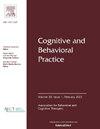Intentional Choices of Metaphors for Psychedelic-Assisted Therapy
IF 2.9
3区 心理学
Q1 PSYCHOLOGY, CLINICAL
引用次数: 0
Abstract
Metaphors applied in psychedelic-assisted therapy (PAT) influence expectations and outcomes. They might help minimize therapist burnout as well. Nevertheless, relatively few publications address their conscious application, especially within a cognitive behavioral framework. Metaphors in PAT related to journeys, rewiring the brain, and medicines are prevalent, but these approaches may not appeal to all clients and might not provide an ideal focus for interventions devoted to learning and cognition, such as those used in cognitive-behavioral therapies. This paper introduces “batting practice” from the sport of baseball as an alternative metaphor. Batting practice emphasizes autonomy, agency, and responsibility, as well as the incremental and skill-building nature of PAT within a cognitive-behavioral perspective. Depicting the therapist as a coach also has advantages, reimagining the therapist-client interaction and time “in the cage,” emphasizing active engagement, ongoing effort, gradual improvements, and periods of progress and stagnation. The batting practice metaphor also emphasizes persistence, patience, mindfulness, and teamwork, paralleling the processes of ongoing integration present in PAT. Application of this metaphor can highlight a focus on the process (“practice”) rather than outcomes, as well as learning opportunities that improve skills across a season or lifetime. We also highlight potential shortcomings of this metaphor to encourage flexibility and enhance awareness as discussions of PAT metaphors continue. Ideally, clients and therapists can collaborate on metaphorical language to optimize outcomes in psychedelic-assisted CBT.
致幻剂辅助治疗隐喻的有意选择
隐喻应用于迷幻辅助治疗(PAT)影响预期和结果。它们也可能有助于减少治疗师的倦怠。然而,相对较少的出版物涉及它们的有意识应用,特别是在认知行为框架内。PAT中与旅行、大脑重组和药物相关的隐喻很普遍,但这些方法可能不会吸引所有的客户,也可能不会为专注于学习和认知的干预提供理想的焦点,比如那些用于认知行为疗法的干预。本文从棒球运动中引入“击球练习”作为另一种隐喻。击球练习强调自主性、能动性和责任感,以及从认知行为的角度来看,PAT的增量和技能建设本质。将治疗师描述为教练也有好处,重新想象治疗师-来访者的互动和“在笼子里”的时间,强调积极的参与,持续的努力,逐步的改善,以及进步和停滞的时期。击球练习的比喻也强调坚持、耐心、专注和团队合作,与PAT中持续整合的过程平行。这个比喻的应用可以突出对过程(“实践”)而不是结果的关注,以及在一个季节或一生中提高技能的学习机会。我们还强调了这个隐喻的潜在缺点,以鼓励灵活性和提高对PAT隐喻的认识。理想情况下,来访者和治疗师可以在隐喻语言上合作,以优化迷幻辅助CBT的结果。
本文章由计算机程序翻译,如有差异,请以英文原文为准。
求助全文
约1分钟内获得全文
求助全文
来源期刊

Cognitive and Behavioral Practice
PSYCHOLOGY, CLINICAL-
CiteScore
4.80
自引率
3.40%
发文量
118
审稿时长
84 days
期刊介绍:
Cognitive and Behavioral Practice is a quarterly international journal that serves an enduring resource for empirically informed methods of clinical practice. Its mission is to bridge the gap between published research and the actual clinical practice of cognitive behavior therapy. Cognitive and Behavioral Practice publishes clinically rich accounts of innovative assessment and diagnostic and therapeutic procedures that are clearly grounded in empirical research. A focus on application and implementation of procedures is maintained.
 求助内容:
求助内容: 应助结果提醒方式:
应助结果提醒方式:


